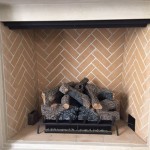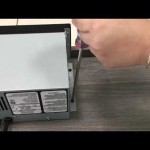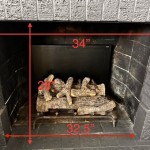Understanding Gas Coal Fireplaces: Functionality, Benefits, and Considerations
Gas coal fireplaces offer a blend of visual appeal and modern convenience, providing the aesthetic of a traditional coal fire without the associated mess and intensive maintenance. These fireplaces utilize gas, typically natural gas or propane, to fuel a fire that dances around realistic-looking artificial coals. This article will explore the mechanisms behind gas coal fireplaces, highlighting their benefits and crucial aspects to consider before installation.
A gas coal fireplace consists of several components. The foundational element is the gas burner, meticulously designed to distribute gas evenly beneath the artificial coals. These burners are often crafted from durable materials like stainless steel or cast iron to withstand prolonged heat exposure. Above the burner lies the artificial coal bed, usually made from ceramic or refractory materials molded to resemble natural coal pieces. These coals are strategically placed to create a visually appealing flame pattern as the gas burns around them.
The firebox, the enclosure surrounding the burner and coal bed, is constructed to contain the fire and direct heat. Fireboxes vary in design and material, ranging from traditional cast iron to more modern steel models. Often, they are lined with refractory materials that help retain and radiate heat effectively. A chimney or vent is essential for safely expelling combustion byproducts, such as carbon dioxide and water vapor, from the fireplace. The venting system adheres to specific building codes and safety standards to ensure efficient and secure operation.
The operation of a gas coal fireplace is relatively straightforward. A gas line connects the fireplace to the main gas supply. A control valve regulates the flow of gas to the burner. Depending on the model, ignition can be manual, using a match or lighter, or automatic, employing a pilot light or electronic igniter. Once ignited, the gas burns, producing flames that flicker around the artificial coals. The amount of heat generated is controlled by adjusting the gas flow via the control valve. Safety features, such as oxygen depletion sensors (ODS), are integrated to shut off the gas supply if oxygen levels in the room become dangerously low, preventing carbon monoxide poisoning.
Key Point 1: Advantages of Gas Coal Fireplaces
Gas coal fireplaces present several advantages compared to traditional wood-burning fireplaces. Convenience is a significant factor. They require minimal effort to start and stop, eliminating the need to gather, chop, and store wood. A simple flick of a switch or turn of a knob initiates the fire, and the same action extinguishes it. This ease of use makes them ideal for individuals seeking ambiance without the hassle of wood fires.
Cleanliness is another major benefit. Gas coal fireplaces produce virtually no ash, soot, or creosote. This eliminates the need for regular chimney cleaning and reduces the risk of chimney fires. The absence of airborne particles also contributes to improved indoor air quality, making them a more attractive option for individuals with respiratory sensitivities.
Controllability is enhanced with gas coal fireplaces. The flame height and heat output are easily adjustable, allowing users to regulate the temperature of the room to their comfort level. Many models come equipped with thermostats and remote controls, providing even greater control over the fireplace's operation. This level of precision is difficult to achieve with traditional wood-burning fireplaces.
Finally, environmental friendliness can be considered an advantage. While burning gas does produce emissions, it is generally considered cleaner than burning wood. Gas combustion produces fewer particulate matter and greenhouse gases compared to wood fires, making them a more sustainable heating option in certain circumstances, particularly when considering the sourcing and processing of firewood.
Key Point 2: Installation Considerations
Proper installation is crucial for the safe and efficient operation of a gas coal fireplace. It requires adherence to local building codes and regulations, as well as the manufacturer's instructions. Employing a qualified and licensed professional for installation is highly recommended. This ensures that the gas line is connected correctly, the venting system is properly installed, and the fireplace operates safely.
Venting requirements vary depending on the type of gas coal fireplace. Direct-vent fireplaces draw air from outside the home and vent exhaust gases directly outside, minimizing the impact on indoor air quality. Vent-free fireplaces, on the other hand, do not require a chimney or vent. However, they rely on oxygen from the room for combustion and release combustion byproducts into the room. Vent-free models are subject to stricter regulations and require careful consideration of room size and ventilation.
Gas line connections must be performed by a licensed gas fitter. Leaks can pose a significant safety hazard, and a professional ensures that the connections are properly sealed and tested. The gas line should be sized appropriately for the fireplace's gas demand to ensure adequate fuel supply and efficient operation.
Clearance requirements must be observed to prevent fire hazards. Combustible materials, such as furniture and curtains, should be kept a safe distance from the fireplace. The manufacturer's instructions specify the minimum clearance distances required for each model. Proper insulation around the fireplace is also important to prevent heat transfer to surrounding walls and floors.
Key Point 3: Safety and Maintenance
Safety should always be the top priority when operating a gas coal fireplace. Installing and maintaining carbon monoxide detectors is essential. Carbon monoxide is an odorless, colorless gas that can be produced by incomplete combustion. Detectors provide an early warning of dangerous carbon monoxide levels, allowing occupants to evacuate the premises.
Regular inspections are crucial for identifying potential problems. The burner should be inspected for clogs or damage. The vent or chimney should be checked for obstructions or leaks. The gas line should be inspected for leaks or corrosion. Any issues should be addressed promptly by a qualified technician.
Professional servicing is recommended annually. A qualified technician can perform a thorough inspection of the fireplace, clean the burner, check the venting system, and test the safety features. This ensures that the fireplace is operating safely and efficiently. Regular servicing can also extend the lifespan of the fireplace.
Proper ventilation is important, especially for vent-free models. Ensure that the room is adequately ventilated when the fireplace is in use. Open a window or door to allow fresh air to circulate. Never operate a vent-free fireplace in a small, enclosed space without adequate ventilation.
Educating all household members on the safe operation of the gas coal fireplace is crucial. Everyone should know how to turn the fireplace on and off, how to adjust the flame height, and what to do in case of an emergency. Children should be supervised around the fireplace at all times.
In conclusion, gas coal fireplaces offer a convenient and aesthetically pleasing alternative to traditional wood-burning fireplaces. Their ease of use, cleanliness, and controllability make them an attractive option for many homeowners. However, proper installation, safety precautions, and regular maintenance are essential for ensuring safe and efficient operation.

Gas Coal Baskets Natural And Propane

Gas Coal Baskets For Small Fireplaces

Belmont Small Gas Insert

Old English Coal Grate Firelight Hearth And Patio

Castlemoore Gas Coal Basket Fits Medium Size Fireplaces

Olde World Vent Free Gas Fireplace Coal Basket Hargrove Vfc19n2c

Coal Effect Dfe Gas Fire Chesneys

The Best Coal Effect Gas Electric Fires Direct Fireplaces

Heritage Gas Fire With Coals Lpg Luxe Fireplaces

Buy Living Flame Inset Gas Fire
Related Posts








